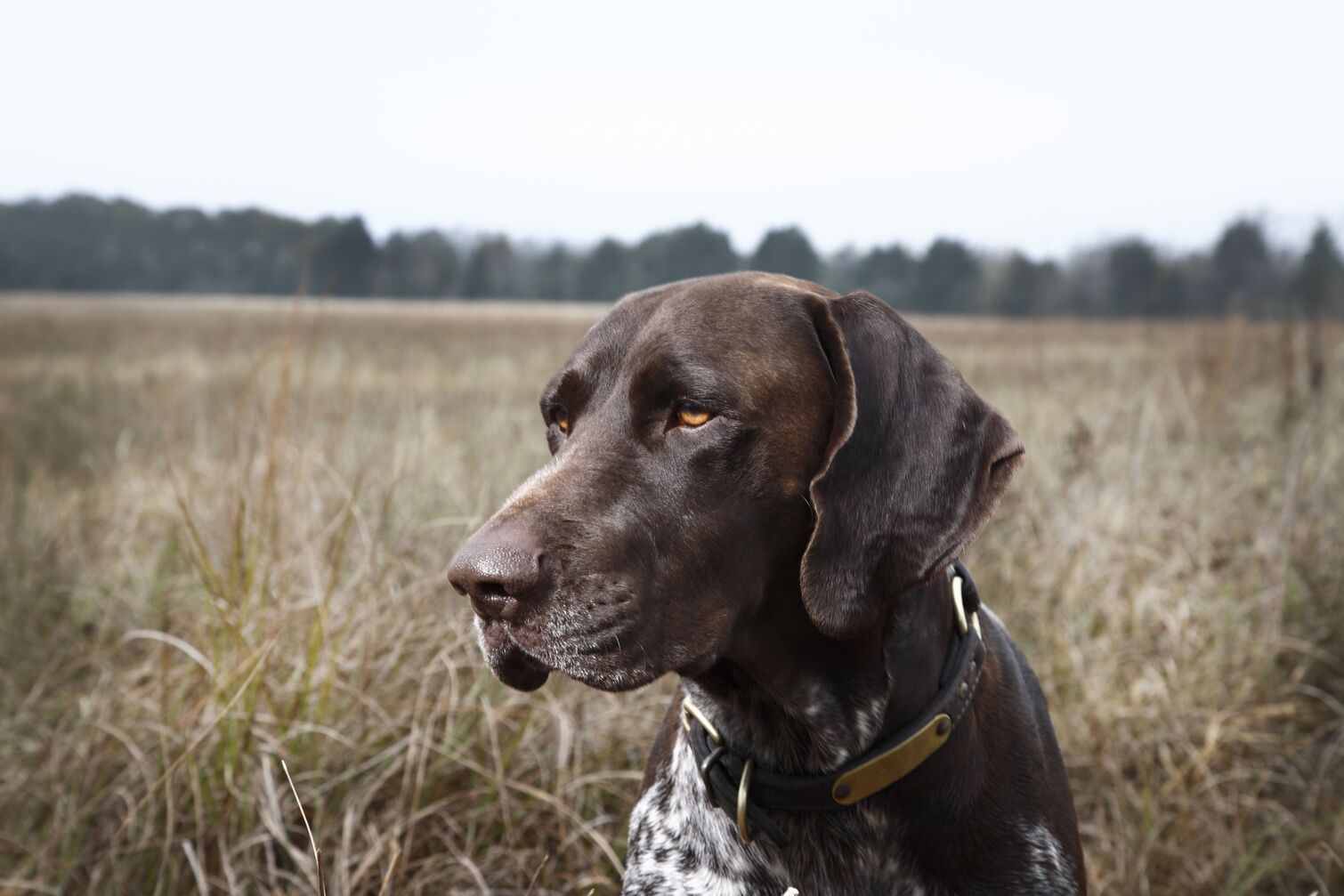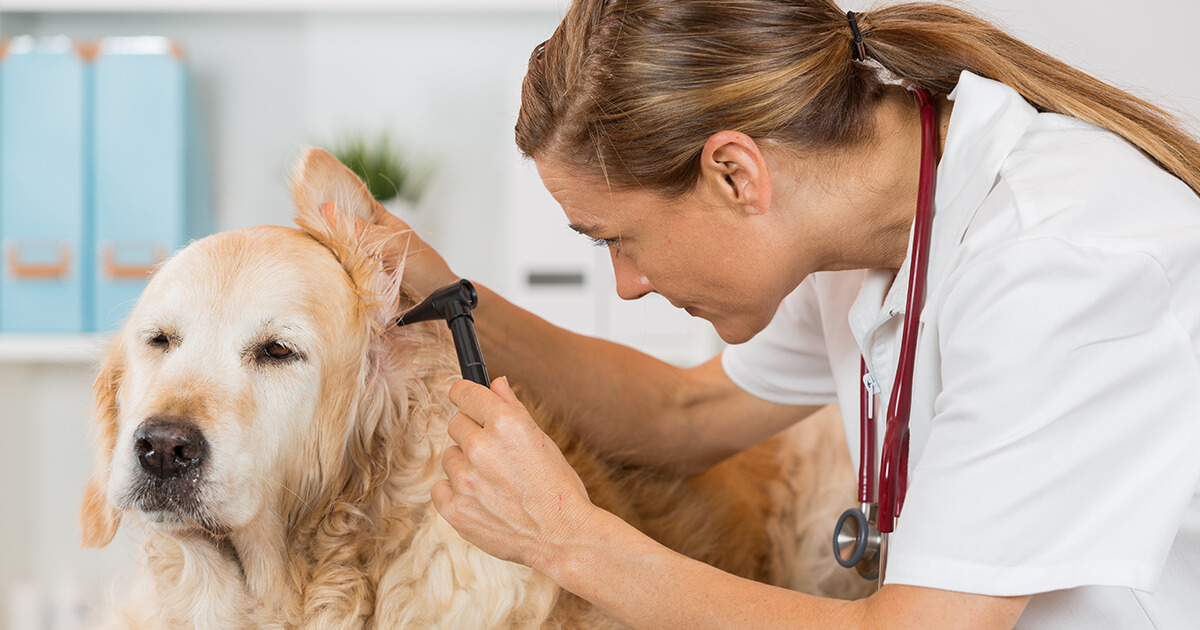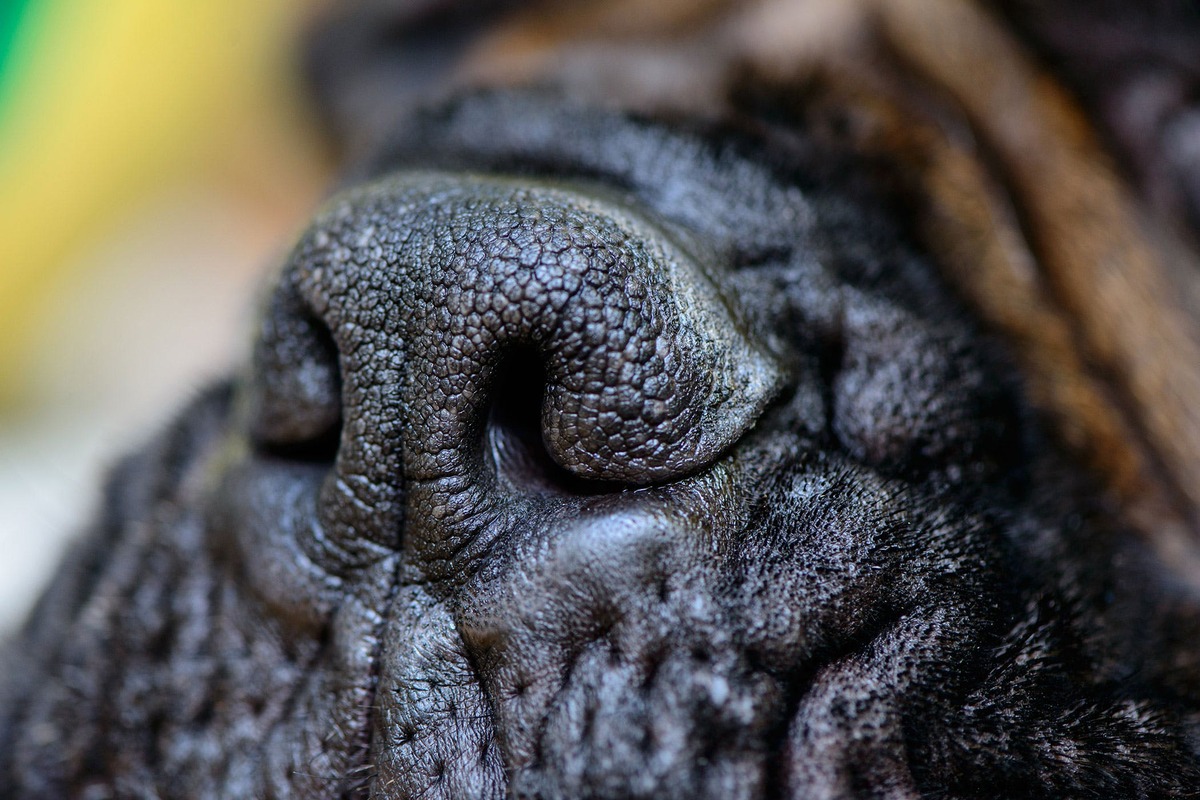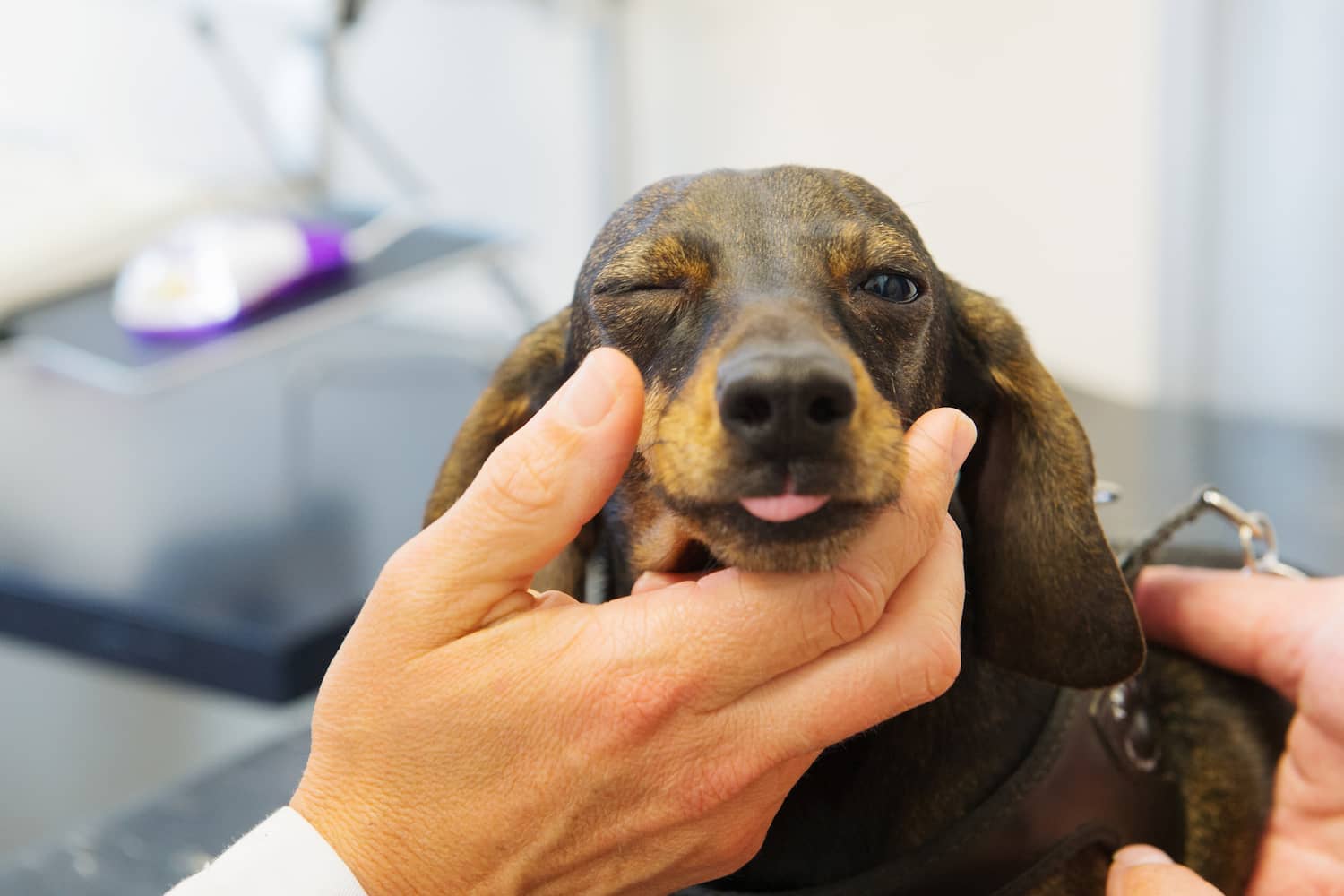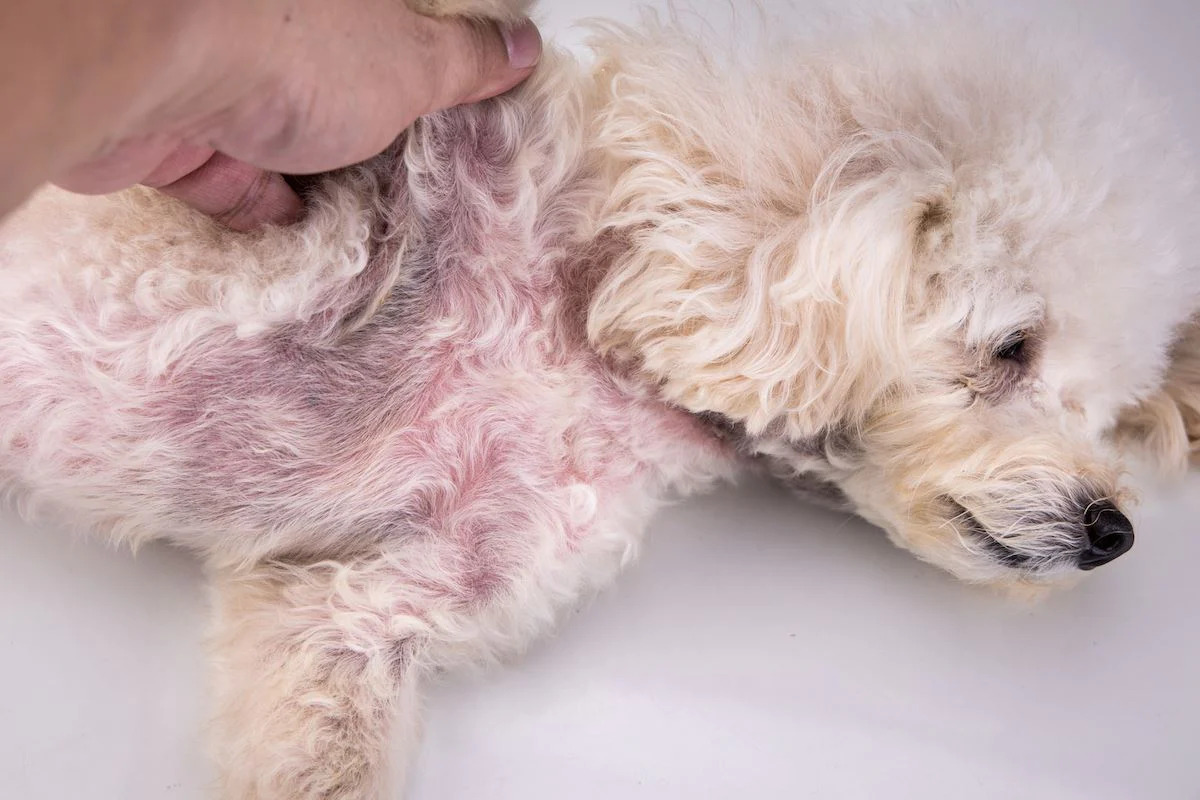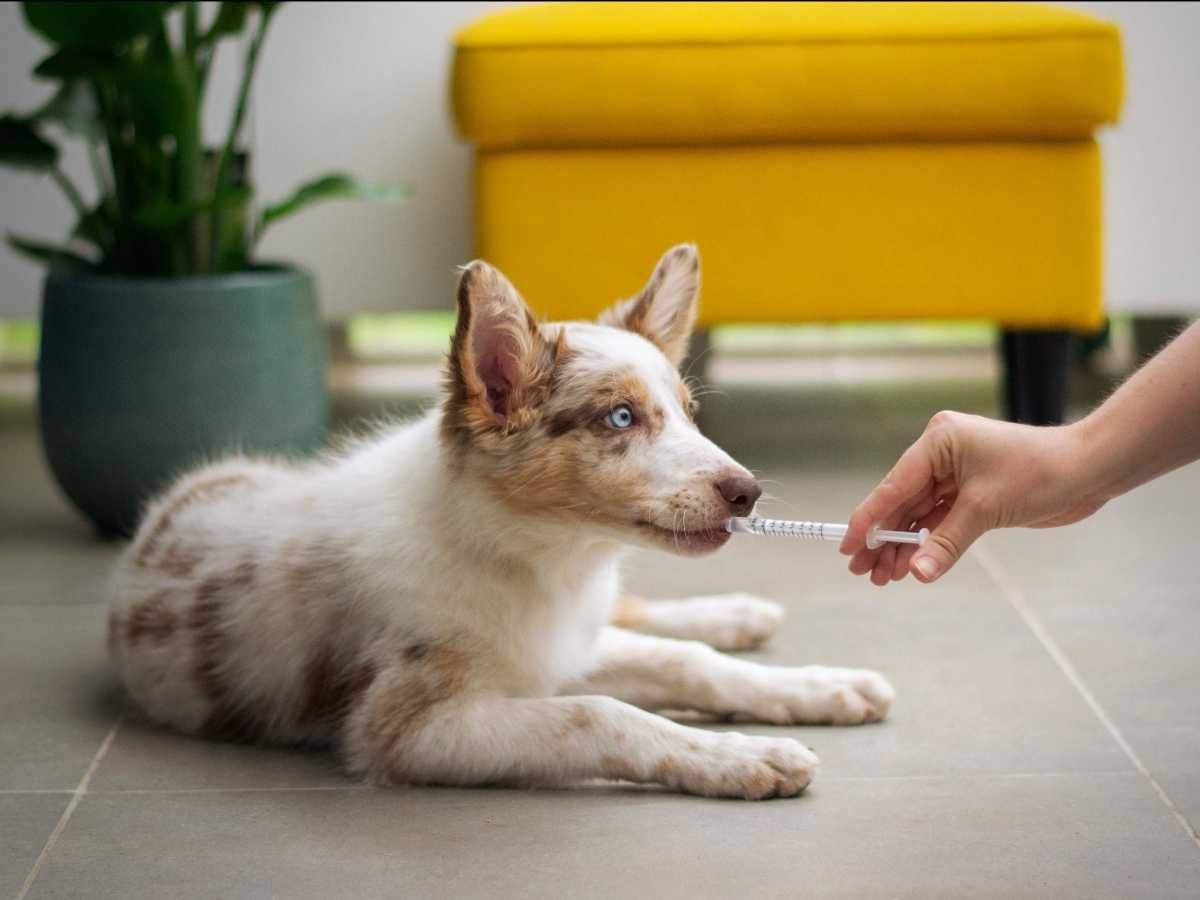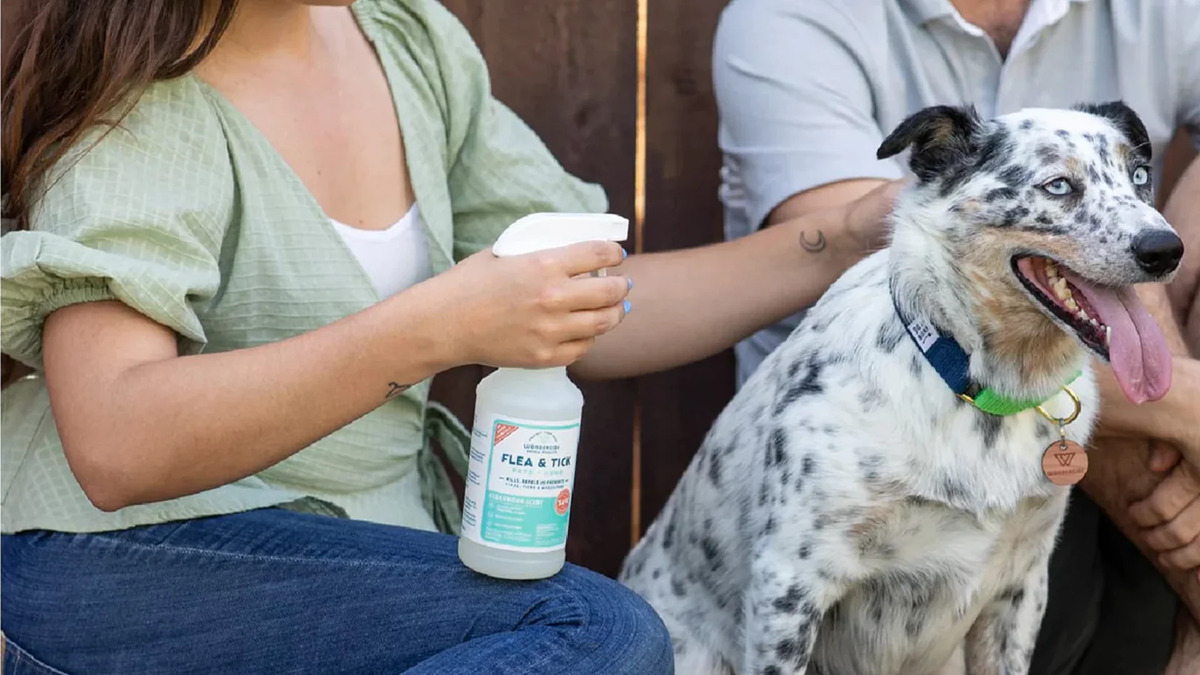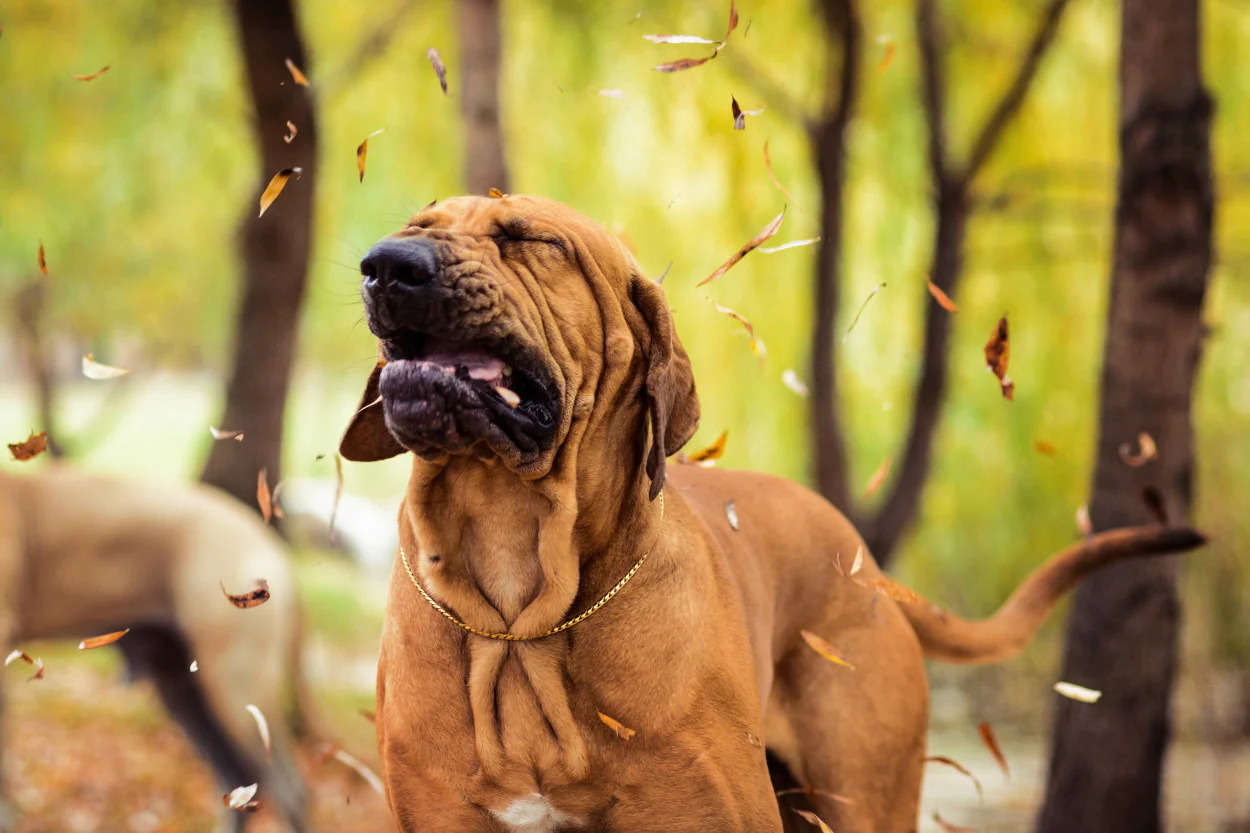Home>Health & Wellness>Common Health Issues>Eye and Ear Health>If My Dog Got Bitten In The Eye, What Can I Do
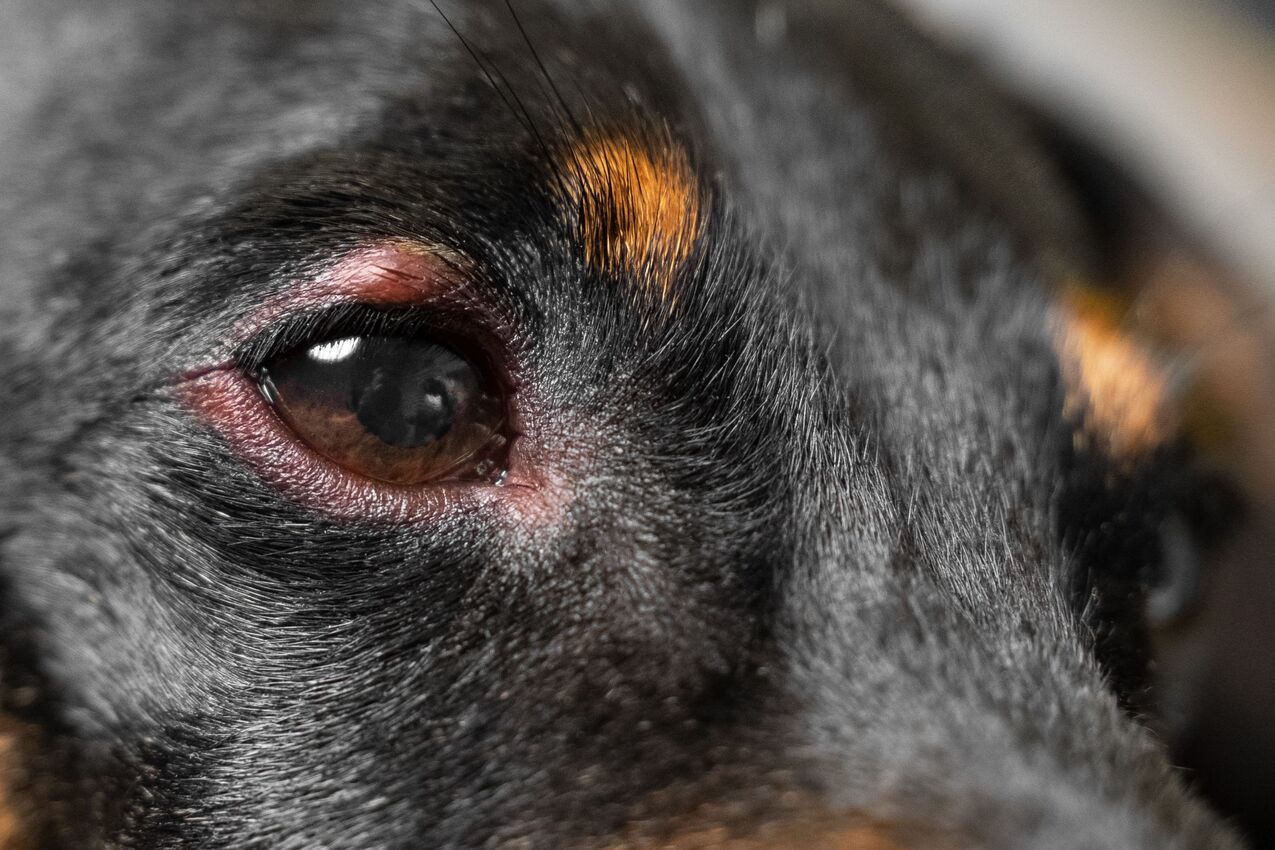

Eye and Ear Health
If My Dog Got Bitten In The Eye, What Can I Do
Published: February 12, 2024
Learn how to care for your dog's eye and ear health after a bite incident. Discover effective remedies and preventive measures for optimal pet wellness.
(Many of the links in this article redirect to a specific reviewed product. Your purchase of these products through affiliate links helps to generate commission for Pawsomeoldies.com, at no extra cost. Learn more)
Table of Contents
Introduction
When it comes to our furry companions, their well-being is a top priority. Dogs are known for their curious and playful nature, but this can sometimes lead to unexpected accidents, including eye injuries. If your beloved canine friend has been bitten in the eye, it can be a distressing and alarming situation. Understanding how to respond effectively is crucial for ensuring your dog's comfort and recovery.
In this comprehensive guide, we will delve into the essential steps to take if your dog experiences an eye injury due to a bite. From assessing the severity of the injury to providing immediate care and taking preventive measures, we will cover every aspect to equip you with the knowledge and confidence to handle such a situation with care and expertise.
Eye injuries in dogs can vary in severity, and the appropriate response depends on the nature and extent of the injury. Whether it's a minor scratch or a more serious puncture wound, knowing how to assess the situation and take the necessary steps can make a significant difference in your dog's recovery.
As a responsible pet owner, being prepared for such unforeseen circumstances is crucial. By familiarizing yourself with the information presented in this guide, you will be better equipped to provide the best possible care for your dog in the event of an eye injury caused by a bite.
Let's delve into the essential steps to take when faced with this challenging situation, ensuring that you can provide the necessary care and support for your furry friend.
Read more: My Cat Scratched My Dog’s Eye: What Do I Do?
Understanding the severity of the injury
When a dog sustains an eye injury from a bite, it's crucial to assess the severity of the damage to determine the appropriate course of action. Understanding the extent of the injury is essential for providing the necessary care and seeking timely veterinary assistance.
-
Observation: Begin by carefully examining the affected eye. Look for signs of swelling, redness, discharge, or any visible wounds. If the eye appears significantly swollen or if there is bleeding, it indicates a more severe injury that requires immediate attention.
-
Assessing Pain: Observe your dog's behavior for signs of distress or discomfort. If they are pawing at their eye, squinting, or exhibiting signs of agitation, it suggests that the injury is causing them significant pain.
-
Vision Impairment: Assess whether the injured eye is affecting your dog's vision. If they are showing signs of impaired vision or reluctance to open the affected eye, it indicates a more serious injury that may impact their overall well-being.
-
Pupil Response: Check the pupil of the affected eye for any abnormalities. A change in pupil size or shape could indicate damage to the eye and surrounding structures.
-
Seeking Professional Advice: If you are uncertain about the severity of the injury or if you notice any concerning symptoms, it is advisable to seek immediate veterinary care. A professional assessment by a veterinarian is crucial for accurately diagnosing the extent of the injury and determining the most effective treatment plan.
Understanding the severity of the injury is the first step in providing appropriate care for your dog. By carefully observing and assessing the symptoms, you can make informed decisions regarding the next steps, ensuring that your furry companion receives the necessary attention and treatment for their eye injury.
Seeking immediate veterinary care
When a dog experiences an eye injury from a bite, seeking immediate veterinary care is paramount to ensure the best possible outcome for their recovery. Veterinary intervention is crucial for accurately assessing the extent of the injury and providing appropriate treatment to alleviate pain and prevent potential complications.
Upon discovering that your dog has sustained an eye injury from a bite, it is essential to prioritize their well-being by promptly contacting a veterinarian. Time is of the essence in such situations, and a swift response can significantly impact the prognosis for your dog's eye health.
Upon reaching out to the veterinary clinic, provide a detailed description of the incident and the symptoms observed in your dog. Communicating the circumstances surrounding the injury, such as the nature of the bite and any accompanying symptoms, enables the veterinary team to prepare for your dog's arrival and prioritize their care.
When transporting your dog to the veterinary clinic, take precautions to prevent further agitation or injury to the affected eye. Minimize exposure to bright light, as it can exacerbate discomfort, and gently secure your dog to prevent them from rubbing or scratching the injured eye.
At the veterinary clinic, the veterinarian will conduct a thorough examination of your dog's eye, assessing the extent of the injury and identifying any associated complications. This may involve specialized diagnostic procedures to evaluate the internal structures of the eye and determine the most appropriate course of treatment.
Depending on the severity of the injury, the veterinarian may administer pain relief to alleviate your dog's discomfort and facilitate the examination process. In cases where there is evidence of significant trauma or potential damage to the eye, immediate intervention, such as cleaning the wound and administering medication, may be necessary to prevent infection and promote healing.
Furthermore, the veterinarian may provide guidance on post-injury care and recommend follow-up appointments to monitor your dog's progress. It is essential to adhere to the veterinarian's instructions diligently, ensuring that your dog receives the necessary support and treatment during their recovery.
By seeking immediate veterinary care, you are prioritizing your dog's well-being and taking proactive steps to address the eye injury effectively. The expertise and resources available at the veterinary clinic are invaluable in ensuring that your dog receives the best possible care, ultimately contributing to their comfort and overall recovery.
In summary, seeking immediate veterinary care is a crucial step in responding to a dog's eye injury caused by a bite. By acting swiftly and engaging the expertise of veterinary professionals, you are demonstrating a commitment to your dog's health and well-being, setting the foundation for a comprehensive and effective treatment plan.
Providing first aid at home
Upon discovering that your dog has sustained an eye injury from a bite, providing immediate first aid at home can help alleviate discomfort and minimize the risk of complications before seeking professional veterinary care. It is important to approach this step with caution and attentiveness, as the delicate nature of the eye requires gentle and precise care.
Steps for providing first aid at home:
-
Minimize Irritation: Begin by gently restraining your dog to prevent them from further aggravating the injured eye. Minimize exposure to bright light and keep the surrounding environment calm to reduce stress and discomfort.
-
Rinsing the Eye: If there are visible signs of debris or discharge in the affected eye, you can carefully rinse it with a sterile saline solution. Use a clean, soft cloth or gauze moistened with the saline solution to gently wipe away any foreign particles or discharge. Avoid applying pressure or causing additional trauma to the eye.
-
Applying a Cold Compress: To alleviate swelling and provide relief, you can apply a cold compress to the injured eye. Use a clean cloth or a specialized cold pack designed for pets, ensuring that it is not excessively cold to avoid discomfort. Gently hold the compress against the eye for brief intervals, allowing your dog to rest in between.
-
Preventing Self-Trauma: It is essential to prevent your dog from pawing at or rubbing the injured eye, as this can exacerbate the injury and lead to further complications. Consider using a protective cone or Elizabethan collar to prevent self-trauma while providing first aid at home.
-
Monitoring Discomfort: Observe your dog for signs of discomfort or distress, and provide a calm and reassuring environment to minimize anxiety. Comforting words and gentle gestures can help alleviate their unease during this challenging time.
It is important to note that while providing first aid at home can offer initial relief, it does not substitute professional veterinary care. Seeking immediate assistance from a veterinarian remains the primary course of action to ensure a comprehensive assessment and tailored treatment for your dog's eye injury.
By providing first aid at home with attentiveness and care, you are taking proactive measures to support your dog's comfort and well-being during this challenging situation. These initial steps, coupled with prompt veterinary care, contribute to a holistic approach in addressing your dog's eye injury, ultimately promoting their recovery and overall health.
Read more: What Can I Use To Help My Dog’s Eyesight
Preventing future injuries
Preventing future injuries is essential for safeguarding your dog's eye health and overall well-being. After addressing an eye injury caused by a bite, it becomes crucial to implement measures that minimize the risk of similar incidents in the future. By proactively creating a safe environment and promoting responsible pet care practices, you can significantly reduce the likelihood of your dog experiencing further eye injuries.
Supervision and Training
Maintaining vigilant supervision of your dog during interactions with other animals is paramount. Whether during playtime at the park or encounters with unfamiliar pets, attentive oversight allows you to intervene promptly if any potential conflicts arise. Additionally, investing in obedience training for your dog can foster positive behaviors and responses, reducing the likelihood of aggressive encounters that may lead to injuries.
Safe Socialization
Facilitating controlled and positive socialization experiences for your dog is instrumental in preventing confrontations that could result in eye injuries. Gradual introductions to other dogs, under supervised and controlled conditions, can help your dog develop appropriate social skills and minimize the risk of aggressive interactions.
Protective Gear
In situations where your dog may be exposed to potential hazards, such as during outdoor activities or interactions with other animals, consider using protective gear. Utilizing a well-fitted muzzle or a protective face mask designed for dogs can provide an added layer of safety, particularly in environments where the risk of confrontations or injuries is heightened.
Environmental Modifications
Assessing and modifying your dog's environment to minimize potential risks is a proactive approach to preventing future injuries. This may involve securing fencing and enclosures to prevent escapes, removing or safely storing items that could pose a hazard, and creating designated play areas that promote safe and supervised interactions.
Regular Health Checkups
Routine veterinary examinations play a crucial role in maintaining your dog's overall health and identifying any potential issues that may predispose them to injuries. Regular eye examinations by a veterinarian can help detect underlying conditions or vulnerabilities that require attention, allowing for proactive measures to be implemented to safeguard your dog's eye health.
Education and Awareness
As a responsible pet owner, staying informed about canine behavior, body language, and potential triggers for conflicts is essential. Educating yourself about dog communication cues and understanding your dog's individual temperament can empower you to anticipate and mitigate situations that may lead to confrontations or injuries.
By implementing these preventive measures, you are actively contributing to the safety and well-being of your dog, particularly in safeguarding their eye health. Proactive steps, coupled with ongoing vigilance and responsible pet care practices, create a nurturing and secure environment for your canine companion, reducing the risk of future injuries and promoting their overall quality of life.
Conclusion
In conclusion, the well-being of our canine companions is a responsibility that extends beyond providing basic care; it encompasses a commitment to their safety, health, and overall quality of life. When faced with the distressing situation of a dog sustaining an eye injury from a bite, the steps taken in response are pivotal in ensuring their comfort, recovery, and long-term well-being.
By understanding the severity of the injury and promptly seeking veterinary care, pet owners demonstrate a proactive and compassionate approach to addressing their dog's needs. The expertise and resources available at veterinary clinics play a crucial role in accurately diagnosing and treating eye injuries, ultimately contributing to the best possible outcome for the affected dog.
Providing first aid at home, when approached with attentiveness and care, offers initial relief and comfort to the injured dog. While it does not replace professional veterinary care, it serves as a supportive measure in the interim, emphasizing the importance of immediate attention and gentle care in such challenging circumstances.
Furthermore, the proactive steps taken to prevent future injuries are a testament to the commitment to creating a safe and nurturing environment for our canine companions. Through vigilant supervision, controlled socialization, and the implementation of protective measures, pet owners actively mitigate potential risks, fostering an environment that prioritizes their dog's safety and well-being.
In essence, the comprehensive approach to addressing a dog's eye injury caused by a bite encompasses timely intervention, attentive care, and proactive measures to prevent future incidents. By embracing these principles, pet owners demonstrate a deep commitment to their dog's health and happiness, fostering a bond built on trust, compassion, and responsible pet care practices.
Ultimately, the care and support provided in response to a dog's eye injury reflect the unwavering dedication to ensuring that our beloved canine companions receive the best possible care, even in challenging circumstances. It is through these efforts that we uphold the well-being of our dogs, enriching their lives and strengthening the enduring bond between humans and their loyal, four-legged friends.
